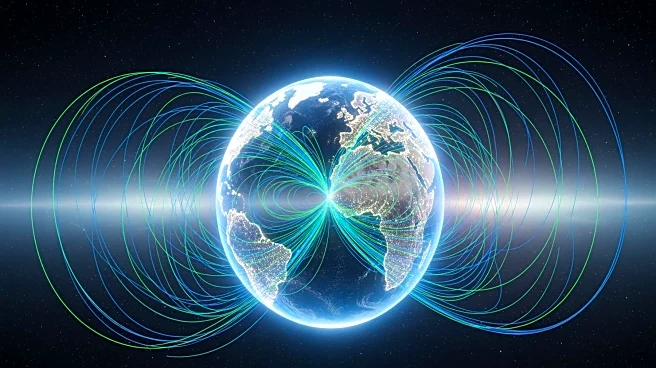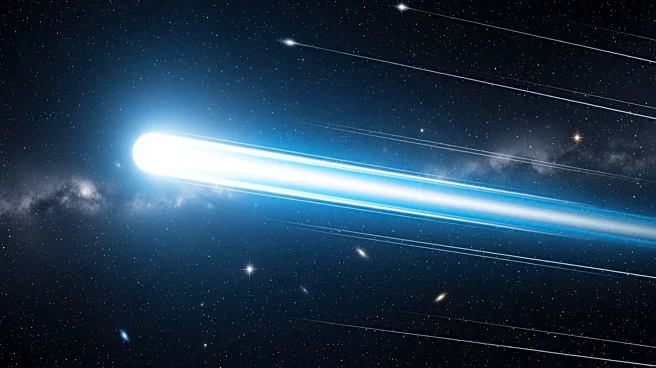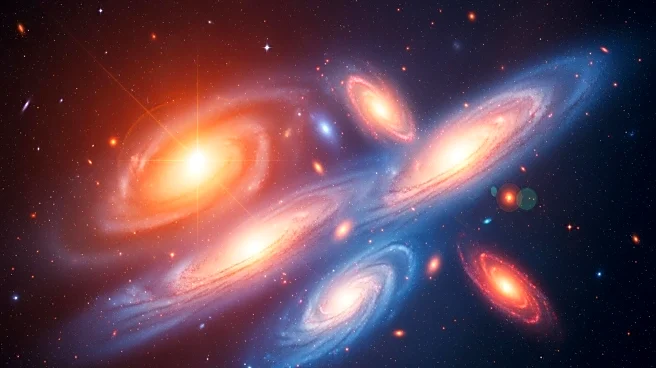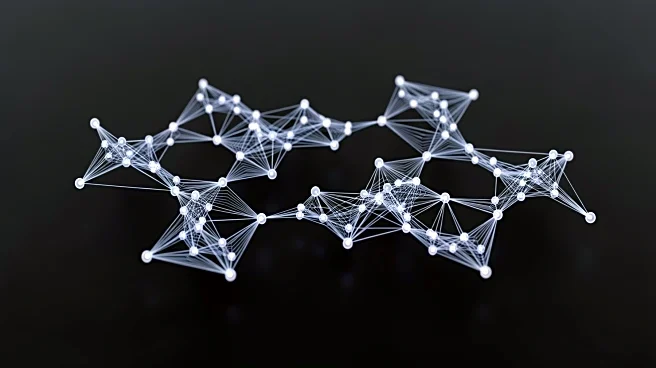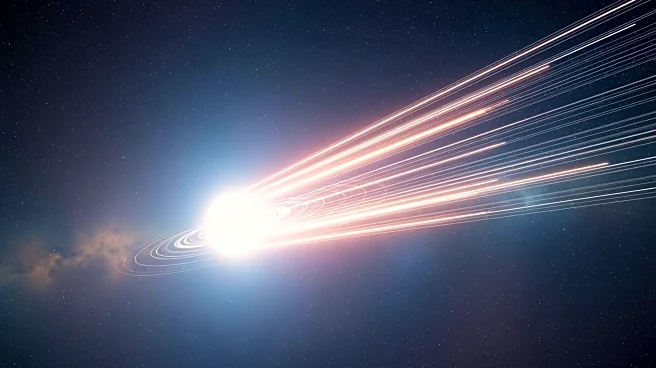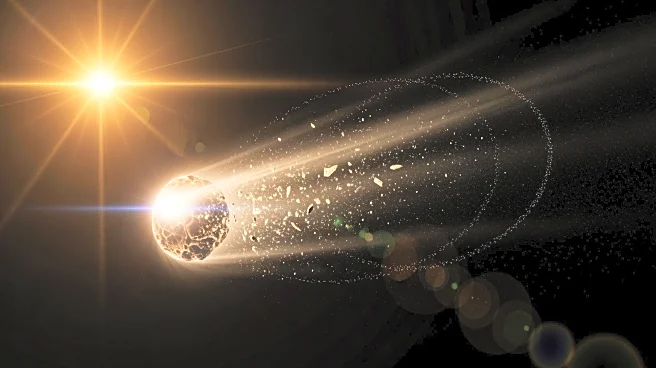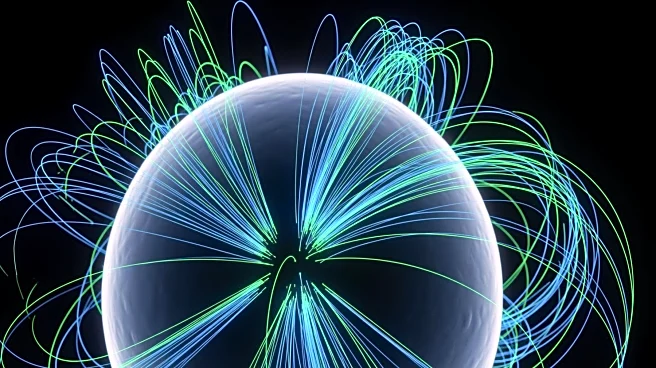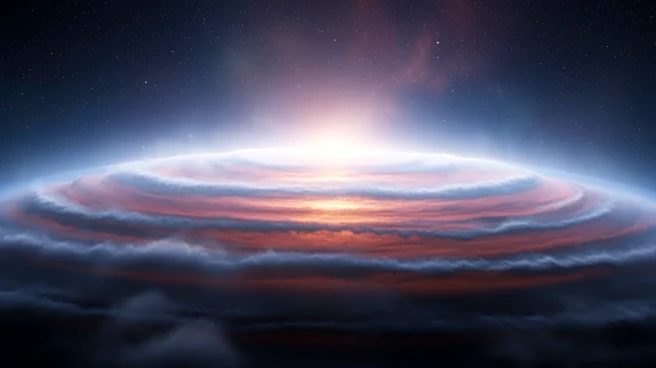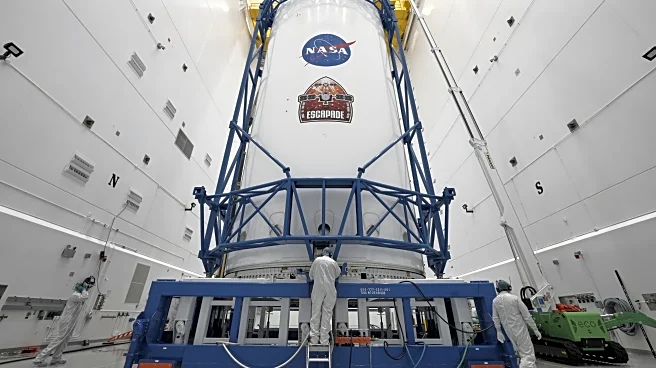What's Happening?
Scientists at Brookhaven National Laboratory have created the hottest matter ever made on Earth, reaching temperatures of 3.3 trillion degrees Celsius. This quark-gluon plasma mimics conditions just after the Big Bang, providing insights into the early
universe. The experiment was conducted using the Relativistic Heavy Ion Collider, where gold nuclei were smashed together at near-light speeds.
Why It's Important?
This scientific breakthrough offers valuable insights into the fundamental building blocks of the universe, enhancing our understanding of particle physics and cosmology. The ability to recreate conditions from the early universe allows researchers to study the transition from quark-gluon plasma to atomic structures. This research could lead to advancements in theoretical physics and contribute to our knowledge of the universe's origins.
What's Next?
The Relativistic Heavy Ion Collider is in its final stages, with plans to shut down and make way for the Electron-Ion Collider in the early 2030s. Scientists will continue to analyze data from the collider to refine their understanding of quark-gluon plasma and its implications for particle physics. The new facility promises to further advance research in this field.


